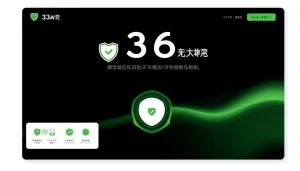Mastering the Art of Communication in Relationships: Strategies for Connection and Understanding
Understanding the Role of Communication in Relationships
Effective communication in relationships is essential for establishing understanding and empathy between partners. It is the cornerstone of any relationship, influencing how couples relate to one another. Developing strong communication in relationships can lead to better emotional connections, conflict resolution, and overall relationship satisfaction. In this article, we will delve deep into the various facets of communication within relationships, equipping you with tools and insights to enhance your connections.
Defining Communication in Relationships
Communication in relationships encompasses a wide range of behaviors, including verbal conversations, non-verbal signals, body language, and even written exchanges. It’s not just about what we say, but how we say it and how we listen. In essence, effective communication involves sharing thoughts, feelings, and needs openly and honestly. This dialogue forms the basis upon which partners can build trust, resolve disagreements, and foster intimacy.
The Importance of Effective Communication
The importance of effective communication cannot be overstated. Research consistently shows a correlation between communication quality and relationship satisfaction. When partners express their feelings openly, they can address issues before they escalate. Moreover, effective communication can significantly reduce misunderstandings, which are common in relationships.
Improved communication skills often correlate with enhanced relationship resilience. Couples who maintain open lines of dialogue tend to navigate crises more effectively than those who do not. This ability to communicate effectively serves as a protective factor, promoting a more stable and harmonious partnership.
How Communication Affects Relationship Dynamics
Communication dynamics can shape the power balance within a relationship. For instance, when one partner dominates conversations or does not listen attentively, it can create feelings of resentment and inadequacy in the other. Conversely, open and balanced communication fosters a sense of equity and mutual respect. Couples who engage in equal exchanges are more likely to feel valued and understood. These dynamics can impact everything from day-to-day interactions to long-term compatibility.
Key Components of Successful Communication in Relationships
Active Listening Techniques
Active listening is a fundamental skill for productive communication. It involves fully concentrating, understanding, responding, and remembering what the other person is saying. Here are several techniques to enhance your active listening skills:
- Reflective Listening: Paraphrase what the other person has said to confirm your understanding.
- Verbal and Non-Verbal Feedback: Use nods, facial expressions, and affirming phrases such as “I see” or “Go on” to show engagement.
- Avoid Interruptions: Resist the urge to interject your thoughts before the other person has finished speaking.
Implementing these techniques can significantly enhance understanding and connection between partners.
The Power of Nonverbal Communication
Nonverbal communication often speaks louder than words. Body language, facial expressions, and tone of voice can convey emotions and intentions that words alone may not. For example:
- Body Language: Open body language, such as uncrossed arms and leaning slightly forward, can indicate interest and receptivity.
- Facial Expressions: A warm smile can provide encouragement, while furrowed brows might indicate concern or confusion.
- Eye Contact: Maintaining eye contact shows attentiveness and respect, while lack of eye contact can lead to perceptions of disinterest.
Being aware of nonverbal cues can enrich conversations and enhance emotional connection.
Open-Ended Questions and Engagement
Asking open-ended questions allows partners to express their thoughts and feelings more freely, which can lead to deeper discussions. For instance, instead of asking, “Did you have a good day?” consider asking, “What was the best part of your day?” This approach encourages elaboration and creates opportunities for more meaningful dialogue. Engaging in such conversations can help partners understand each other’s perspectives and experiences more profoundly.
Common Communication Barriers in Relationships
Identifying Misunderstandings and Assumptions
Misunderstandings often arise from assumptions. Partners may interpret each other’s words through their own biases or previous experiences, leading to miscommunication. A classic example is when a partner responds defensively to a seemingly benign statement, assuming it is a criticism when it was not intended as such. Recognizing that both partners bring their own histories to conversations is essential for navigating these pitfalls.
To combat these barriers, couples should practice clarifying statements. For instance, responding with, “What I hear you saying is…” helps ensure that both parties understand each other correctly.
Emotional Triggers and Their Impact on Dialogue
Emotional triggers can significantly affect how individuals respond during conversations. Certain phrases or tones may evoke strong emotional reactions based on past experiences. For example, if one partner experienced betrayal in a previous relationship, conversations about trust may elicit heightened defensiveness. Being aware of each other’s triggers allows for more sensitive and constructive discussions.
Couples can mitigate the effects of emotional triggers by practicing mindfulness and self-regulation. Taking a moment to breathe and collect thoughts before responding can prevent escalation and facilitate clearer communication.
Navigating Conflicts through Communication
Conflict is a natural part of any relationship, and how couples communicate during disagreements can significantly impact their dynamics. Successful navigation of conflicts hinges on several strategies:
- Stay Focused on the Issue: Avoid bringing up past grievances that can derail the current conversation.
- Use “I” Statements: Frame concerns from your perspective to minimize defensiveness in your partner. For example, say “I feel neglected when…” instead of “You never listen.”
- Avoid Blaming and Accusations: Blame can lead to defensiveness, while collaborative problem-solving fosters connection.
Approaching conflicts with a mindset of resolution rather than blame can lead to healthier outcomes and stronger relationships.
Practical Strategies for Improving Communication in Relationships
Constructive Feedback and Supportive Language
Providing constructive feedback is crucial for growth within a relationship. When offering feedback, it’s essential to focus on specific behaviors rather than personal attributes, which can come off as criticism. For instance, rather than saying, “You are always late,” one might say, “I feel anxious when we don’t leave on time; can we work on that together?” This approach promotes collaboration and minimizes defensiveness.
Using supportive language that recognizes your partner’s efforts can also enhance communication. Statements like “I appreciate when you take the time to listen” help reinforce positive interactions.
Establishing Regular Check-Ins
Regular communication check-ins provide an opportunity for partners to express their feelings, address concerns, and celebrate successes. These conversations can be scheduled weekly or bi-weekly, creating a safe environment where both partners feel heard and valued. During these check-ins, it can be beneficial to discuss emotional landscapes, relationship goals, and areas for improvement.
This ritual not only fosters deeper connection but also emphasizes the importance of ongoing dialogue in sustaining healthy relationships.
Using Technology to Enhance Communication
In today’s digital age, technology can play a pivotal role in facilitating communication. Text messaging, video calls, and various apps can help maintain connection, especially for couples with busy schedules or long-distance relationships. However, it is crucial to balance digital communication with face-to-face interactions, as the latter allows for richer, more nuanced exchanges.
Using shared apps for scheduling, reminders, or even fun activities can make communication more collaborative and engaging, fostering a sense of togetherness even when physically apart.
Measuring the Impact of Communication on Relationship Satisfaction
Tools for Assessing Communication Effectiveness
Measuring communication effectiveness can be challenging, but using structured tools can facilitate this process. Surveys and questionnaires tailored to assess communication styles and satisfaction can provide valuable insights into areas of strength and opportunities for improvement. For instance, employing tools like the “Couples Satisfaction Inventory” can help gauge perceptions of communication dynamics and overall relationship health.
Feedback from these tools can serve as a benchmark, enabling couples to track their progress over time.
Building Stronger Connections through Communication
Building stronger emotional bonds through effective communication involves not only sharing thoughts but also showing vulnerability. Vulnerability encourages intimacy and trust, as partners learn to rely on each other in times of need. Initiating open conversations about personal goals, fears, and aspirations can solidify the partnership.
Additionally, making an effort to express gratitude and affection regularly can enhance feelings of connection. Simple gestures of appreciation can reinforce the importance of communication, making both partners feel valued.
Success Stories: Real-Life Examples of Improved Communication
Real-life testimonials can powerfully demonstrate the impact of improved communication in relationships. Case studies reveal how couples who adopted active listening techniques, established regular check-ins, or utilized supportive language often saw notable enhancements in their relationship satisfaction. Couples reported feeling more aligned, understood, and connected as they embraced communication as a shared responsibility.
The transformative power of effective communication is evident in countless relationships, underscoring the necessity of making it a priority.














Post Comment